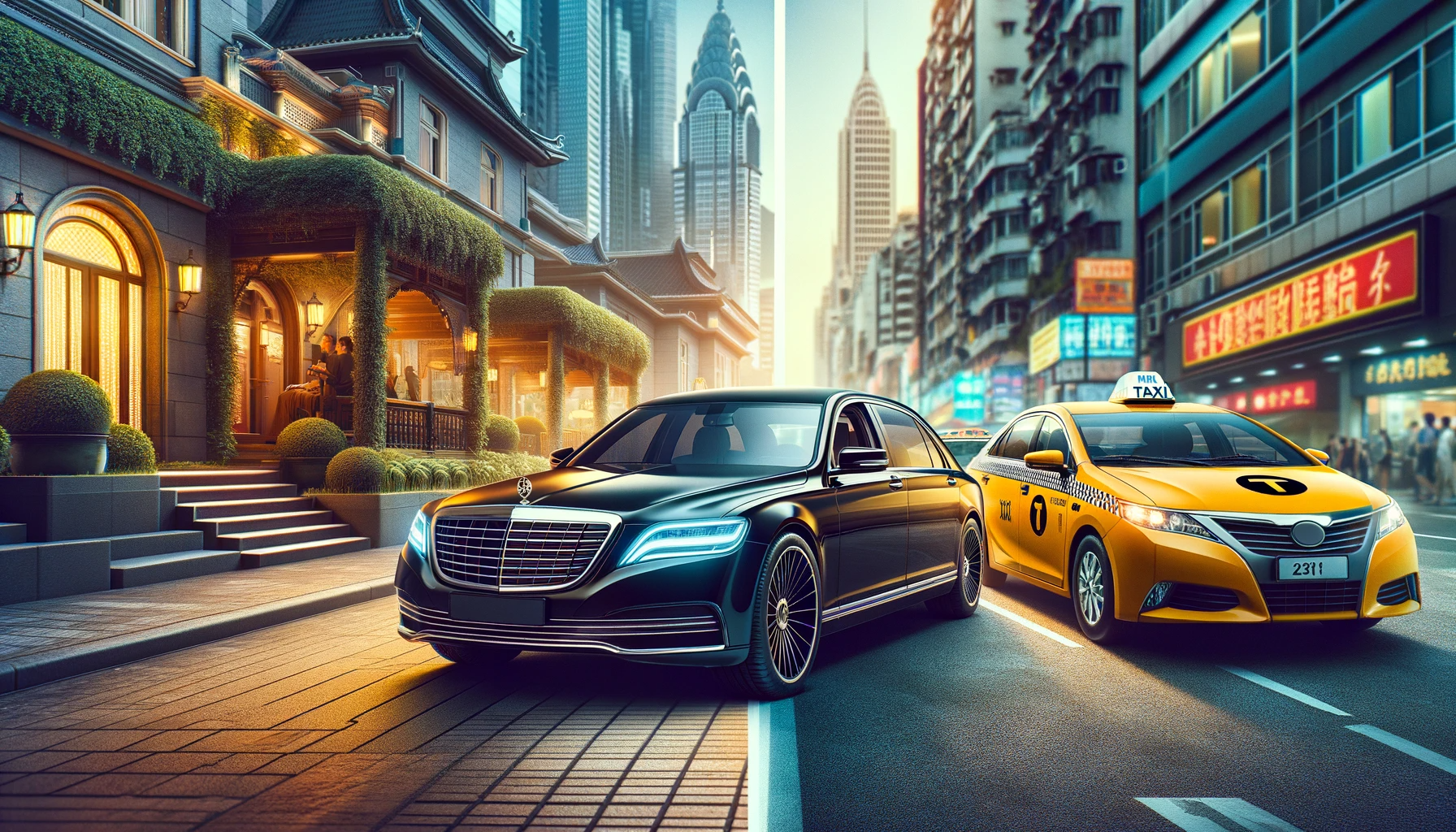The distinction between a chauffeur and a driver lies in their roles, responsibilities, and the service level they provide. While chauffeurs are associated with luxury, personalized service, and professional etiquette, drivers cover a broader spectrum, focusing on the practical aspects of transportation, ranging from personal mobility to commercial logistics.
Definition and origin
Chauffeur
The term “chauffeur” comes from the French word for “stoker,” a nod to the early days of automotive travel when vehicles were steam-powered, and someone had to stoke the engine. Over time, as cars evolved, the role of the chauffeur became more defined and prestigious, transforming into a profession that signifies much more than just driving.
A chauffeur today is often associated with luxury, professionalism, and an elevated level of service. They are not just hired to drive but to provide a bespoke service that caters to the client’s every need during their journey, from offering privacy to ensuring safety, comfort, and convenience. The evolution from stoker to luxury service provider marks a significant shift in how transportation services are perceived and delivered.
Driver
In contrast, the term “driver” denotes a broader category of individuals who operate vehicles, whether for personal, commercial, or professional purposes. This can range from someone driving their personal car to work, to professional truck drivers, and those working for ride-sharing companies. Unlike chauffeurs, drivers are not necessarily associated with luxury vehicles or specialized services. Their primary responsibility is to ensure the safe and efficient transportation of passengers or goods from one location to another.
The role of a driver is more about function than form, emphasizing the practical aspect of transportation rather than the provision of luxury services. Drivers cater to a wide array of needs and are crucial to the functioning of modern society, from delivering goods to ensuring people can move freely and efficiently in their daily lives.
Scope of responsibilities
Chauffeur
Chauffeurs are tasked with more than just driving; they provide a comprehensive service that extends beyond transportation. This service includes meticulous attention to detail, from ensuring the vehicle is immaculately maintained to providing personalized attention to passengers’ needs. Chauffeurs often handle luggage, open doors, and are prepared to make extra stops upon request. They are also responsible for maintaining the vehicle’s appearance, ensuring it is clean and presentable at all times.
Furthermore, chauffeurs are expected to plan routes meticulously, taking into account traffic, weather, and any potential delays to ensure the most efficient and pleasant journey possible. This level of service requires a deep understanding of customer service, as well as the ability to anticipate and cater to the specific needs of each client.
Driver
The primary responsibility of drivers, regardless of their specific job, is to operate their vehicle safely and efficiently. This includes following traffic laws, ensuring passenger safety, and, for commercial drivers, timely delivery of goods or passengers.
While some drivers, such as those working for ride-sharing services, may also provide a degree of customer service, the scope is generally more limited compared to chauffeurs. Private drivers need to manage their time and routes effectively, especially in professions where timeliness is critical, such as delivery or public transportation.
However, their focus is on the practical aspects of driving rather than providing luxury or highly personalized services. The role of a driver is essential in facilitating mobility and logistics, serving as the backbone of transportation systems worldwide.
Training and skills
Chauffeur
Chauffeurs typically undergo specialized training that goes beyond standard driving skills. This includes defensive driving techniques to ensure passenger safety in all conditions, knowledge of vehicle maintenance, and often, etiquette and customer service training.
Chauffeurs must be adept at navigating with minimal guidance, ensuring a smooth and efficient route. Their training also emphasizes professionalism and discretion, vital for maintaining client confidentiality and ensuring a comfortable experience. In addition, chauffeurs often need to possess or acquire specific licenses or certifications, depending on the jurisdiction and the type of vehicle they operate. This comprehensive training ensures that chauffeurs can provide a high level of service that meets the expectations of their clientele.
Driver
The training requirements for drivers vary widely depending on their specific role. For example, commercial truck drivers need to obtain a commercial driver’s license (CDL) and may undergo training related to cargo handling, long-haul driving, and safety regulations. Ride-sharing drivers might need to pass a background check and have a vehicle that meets certain standards, but they do not typically require formal training.
The emphasis for drivers is on safety and adherence to traffic laws, with customer service being a secondary concern. While some drivers may choose to pursue additional training to enhance their skills or meet employer requirements, the primary focus is on the practical aspects of driving and ensuring the safe, efficient transport of passengers or goods.
Employment context
Chauffeur
Chauffeurs are an integral part of services that emphasize exclusivity and tailor-made solutions. They are typically employed by private clients, high-end hotels, limousine suppliers or companies seeking distinguished service and privacy for their executives. A private chauffeur falls within this category, offering dedicated services focusing on individual or family needs, bridging the gap between formal luxury and broader functionality. They ensure convenience, safety, and personalized attention, reflecting a commitment to a specific employer or set of clients. Chauffeurs and private drivers alike may be expected to be available on call and might adhere to a dress code, underscoring the profession’s emphasis on presentation and professionalism.
The requirement for drivers to present themselves in uniform or specific attire underlines the importance attached by the profession to appearance and professionalism. It’s a job that demands not only excellent driving skills, but also a commitment to a holistic service ethic, which emphasizes the driver’s contribution to the overall experience as much as the act of driving itself.
Driver
Drivers encounter a wide variety of employment contexts, reflecting the diversity of roles within the broader category of driving occupations. They may be self-employed, as is often the case with ride-sharing drivers or independent contractors. Alternatively, they might work for a single company, such as a delivery service, public transportation system, or a logistics company.
The nature of employment can vary from part-time, flexible schedules to full-time positions, with the level of commitment and hours worked being tailored to the job’s specific requirements. Unlike chauffeurs, drivers are not typically required to wear uniforms unless mandated by their employer, and the focus is on practicality and safety rather than luxury. The varied employment contexts for drivers underscore the role’s versatility and its critical function in supporting personal mobility, commerce, and the delivery of services across multiple sectors of the economy.
Vehicle type
Chauffeur
Chauffeurs are synonymous with luxury and exclusivity, often reflected in the type of vehicles they drive. These vehicles are typically high-end, luxury brands known for their comfort, style, and performance. Limousines, executive sedans, and luxury SUVs are common choices, equipped with amenities designed to enhance the passenger experience.
The vehicles are meticulously maintained, both mechanically and aesthetically, to meet the high standards expected by clients. The choice of vehicle is a crucial aspect of the chauffeur service, contributing to the overall sense of sophistication and exclusivity that defines the profession. The vehicle not only serves as a mode of transportation but also as a symbol of status and luxury, reinforcing the chauffeur’s role in providing a premium service.
Driver
The range of vehicles operated by drivers is much broader and depends on the specific nature of their work. For personal vehicle drivers, this could simply be their everyday car. Professional drivers, such as those in delivery services, might operate vans or trucks designed to transport goods efficiently.
Ride-sharing drivers use their personal vehicles, which need to meet certain standards set by the ride-sharing company but are not necessarily luxury models. Commercial truck drivers operate large vehicles designed for long-haul transport. The focus for drivers is on practicality, reliability, and suitability for the task at hand, rather than luxury. The type of vehicle a driver operates is dictated by the requirements of their job, emphasizing functionality and the efficient movement of people or goods over the presentation or passenger experience.
Chauffeurs and drivers fulfill essential yet distinct roles within the transportation sector. Chauffeurs offer a bespoke, luxury experience with a focus on personalized service and professionalism, whereas drivers emphasize practicality, safety, and efficiency across a variety of contexts, from personal travel to commercial deliveries, highlighting the diverse nature of driving professions.







